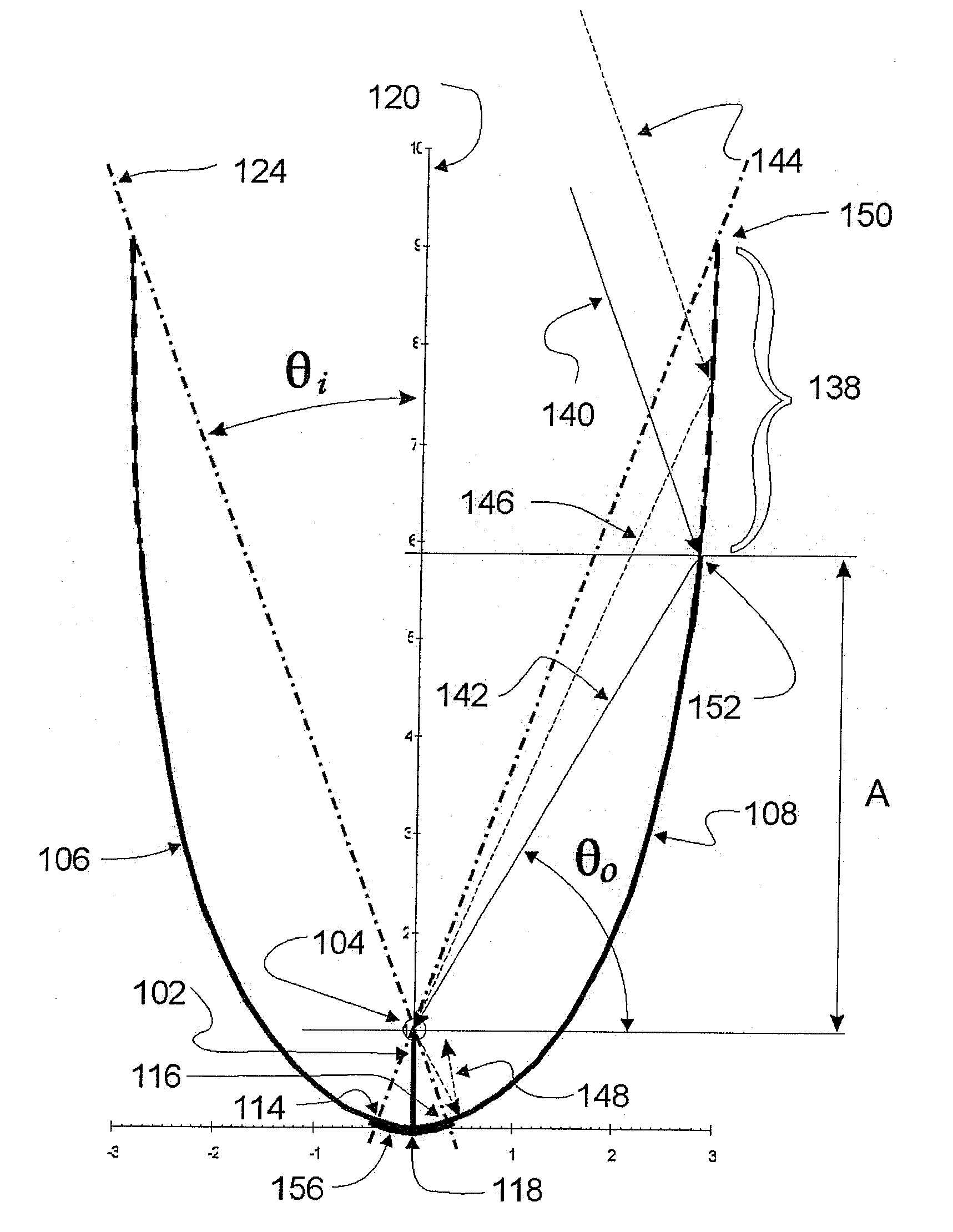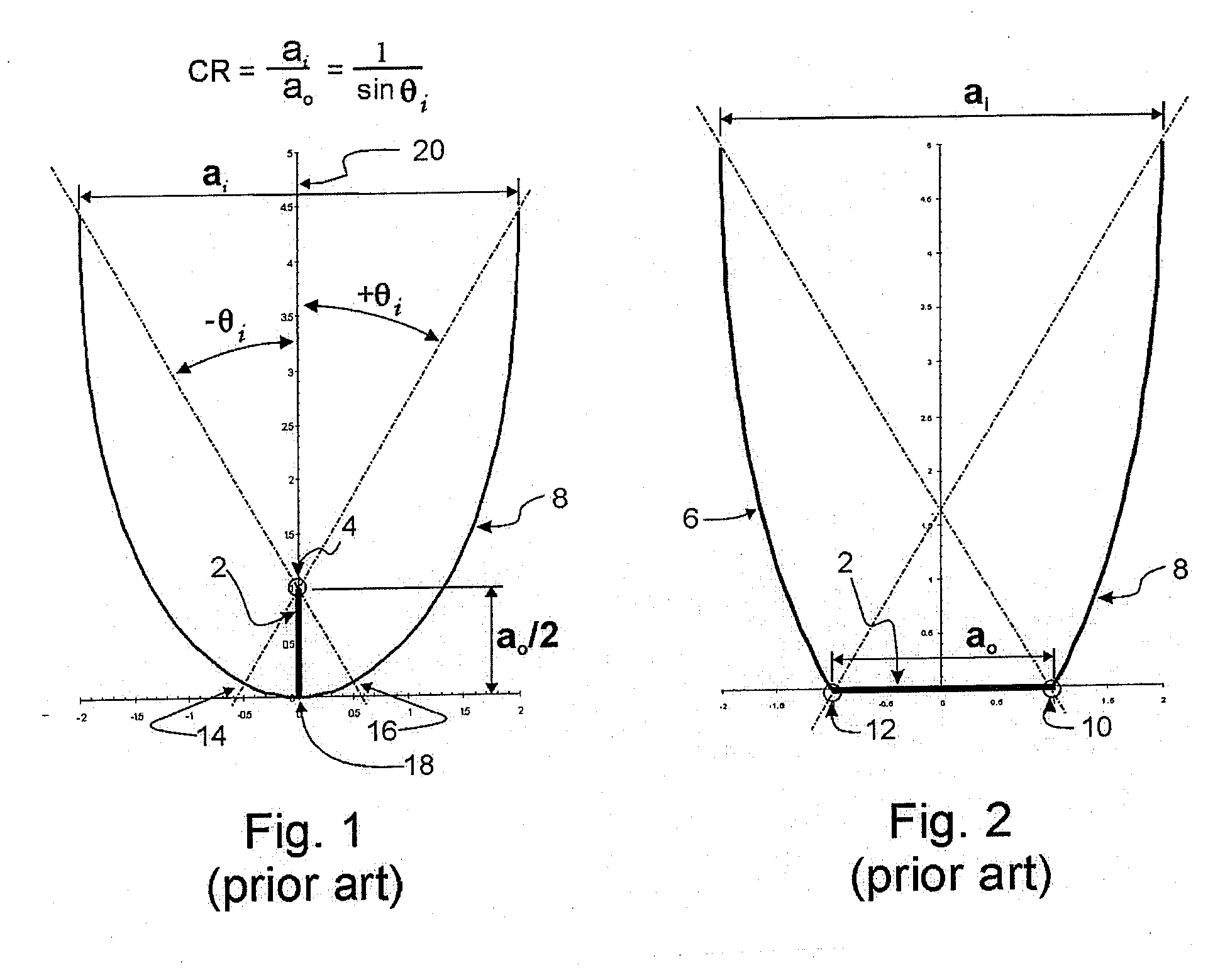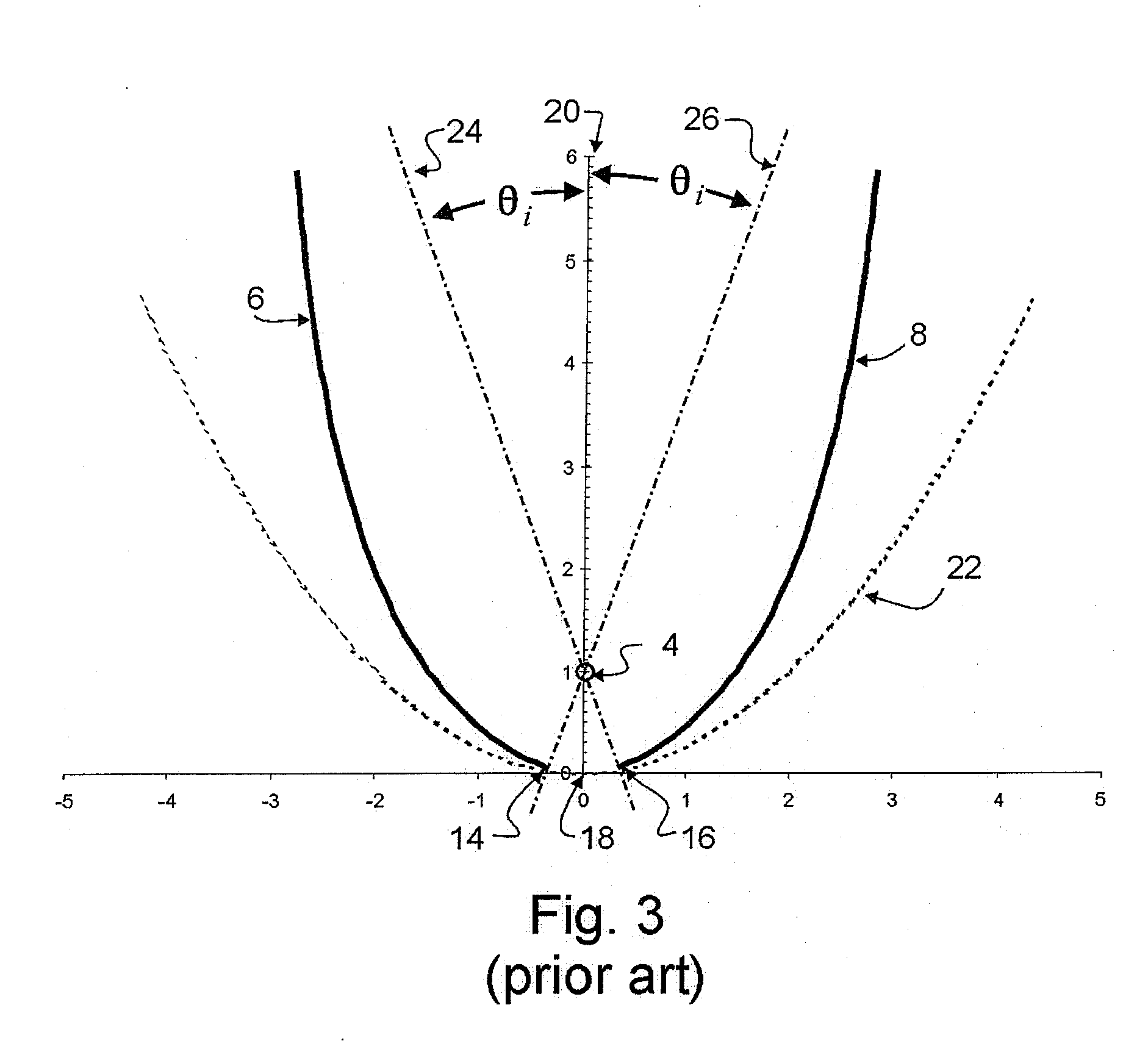Fin-type compound parabolic concentrator
- Summary
- Abstract
- Description
- Claims
- Application Information
AI Technical Summary
Benefits of technology
Problems solved by technology
Method used
Image
Examples
Embodiment Construction
[0042]The invention relates to a fin-type compound parabolic concentrator which is designed to limit the light striking the photovoltaic cell absorber to an angle less than or equal to a critical angle θo. There are three components to the invention: truncating the semi-parabolic reflectors of the concentrator; configuring the limiting apex geometry of the bottom reflector of the concentrator; and connecting the apex geometry with the semi-parabolic reflectors.
[0043]Referring to FIG. 7, there is shown a fin-type compound parabolic concentrator 150 including a pair of opposed semi-parabolic reflectors 106, 108 arranged on opposite sides of a common plane 120 and having a focal point 104 on the common plane. The reflectors are rotated in opposite directions relative to the common plane through a rotational angle θi defined by lines extending from the apexes 114, 116 of each semi-parabolic reflector through the focal point 104. The concentrator further includes a generally arcuate bott...
PUM
 Login to View More
Login to View More Abstract
Description
Claims
Application Information
 Login to View More
Login to View More - R&D
- Intellectual Property
- Life Sciences
- Materials
- Tech Scout
- Unparalleled Data Quality
- Higher Quality Content
- 60% Fewer Hallucinations
Browse by: Latest US Patents, China's latest patents, Technical Efficacy Thesaurus, Application Domain, Technology Topic, Popular Technical Reports.
© 2025 PatSnap. All rights reserved.Legal|Privacy policy|Modern Slavery Act Transparency Statement|Sitemap|About US| Contact US: help@patsnap.com



